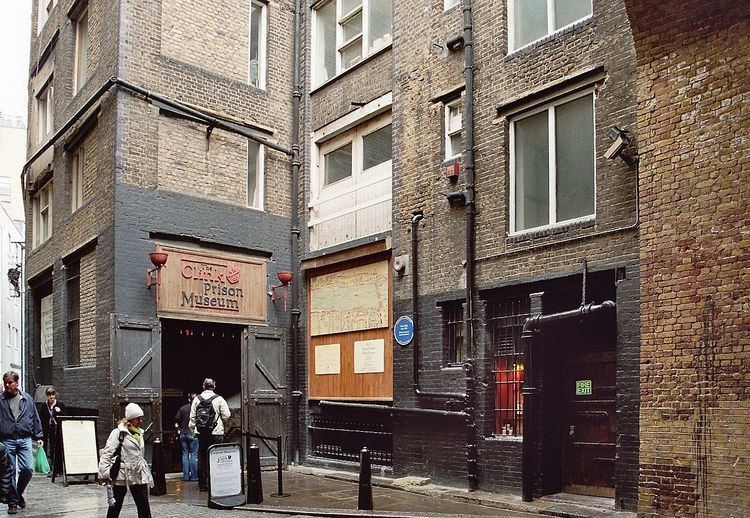Opened 1144 Phone +44 20 7403 0900 | Closed 1780 Function Prison | |
 | ||
Address 1 Clink St, London SE1 9DG, UK Hours Open today · 10AM–7:30PMSaturday10AM–7:30PMSunday10AM–7:30PMMonday10AM–6PMTuesday10AM–6PMWednesday10AM–6PMThursday10AM–6PMFriday10AM–6PMSuggest an edit Similar Winchester Palace, Golden Hind, HM Prison Brixton, London Dungeon, Borough Market Profiles | ||
The clink prison museum london
The Clink was a prison in Southwark, England which functioned from the 12th century until 1780 either deriving its name from, or bestowing it on, the local manor, the Clink Liberty (see also the Liberty of the Clink). The manor and prison were owned by the Bishop of Winchester and situated next to his residence at Winchester Palace. The Clink was possibly the oldest men's prison and probably the oldest women's prison in England.
Contents
- The clink prison museum london
- Lady edwina grosvenor visits the clink restaurant at hmp styal cheshire
- History
- Decline
- Today
- English Catholics
- English Protestants
- References
The origins of the name "The Clink" are uncertain, but it is possibly onomatopoeic and derives from the sound of striking metal as the prison's doors were bolted, or the rattling of the chains the prisoners wore.
The name has become slang as a generic term for prison or a jail cell.
Lady edwina grosvenor visits the clink restaurant at hmp styal cheshire
History
There has been a prison owned by the Bishop of Winchester in one form or another since the year 860, although at that time it would only have been one cell in a priests' college. By 1076 an archbishop had listed the types of punishment allowed, scourging with rods, solitary confinement, and bread and water in silence.
The building of a chapel and mansion at Southwark by the Bishop of Winchester, as his near London palace completed sometime after the acquisition of the manor territory between 1144 and 1149.
The prison was any number of structures within the mansion's area whereby the local miscreants were kept to await trial. The higher status of some of its internees was solely due to the importance of the Bishop of Winchester as a senior member of the king's government, usually as Lord Chancellor, who could also put to trial in his ecclesiastic court those accused of heresy and other religious offences.
The prisoners were ill treated although those with money and friends on the outside were able to pay the gaolers to make their time better. As the gaolers were very poorly paid, they found other ways to supplement their income. They hired out rooms, beds, bedding, candles and fuel to those who could afford it. Food and drink were charged at twice the outside price. They accepted payments for fitting lighter irons and for removing them completely. For a fee, prisoners would be allowed outside to beg or even to work. Madams were allowed to keep a brothel going, with payments going to the gaolers. Poorer prisoners had to beg at the grates that led up to street level and sell anything they had with them, including their clothes, to pay for food.
Winchester House was raided by rioters protesting the Statute of Labourers in 1450. Classing clerics as tax collectors, they murdered them and released prisoners from the Clink before burning it down. The rebellion was put down and Winchester House was rebuilt and extended, including a new prison.
Originally, most of the prisoners had been those who had broken the rules of the Liberty, but by the 16th century, it had become largely a prison for heretics who held contrary views to the bishops. John Bradford and John Hooper were amongst the inmates. In later years it was mainly a debtors' prison.
Decline
In 1649 Winchester House was sold to a property developer and was divided into shops, tenements and dye houses. The Cage was removed temporarily as taxpayers had complained about the cost of upkeep, but the whipping post was still busy. By 1707 both of these and the stocks were all unused because of the cost of upkeep, and by 1732 there were only two registered inmates. In 1745 a temporary prison was used, as the Clink was too decayed to use although, by 1776, the prison was again taking in debtors. It was burnt down in 1780 by Gordon rioters, and was never rebuilt.
Today
The Clink Prison Museum exhibition is located on Clink Street part of the original site at Bankside, Southwark. The Clink Prison Museum tries to recreate the conditions of the original prison.
